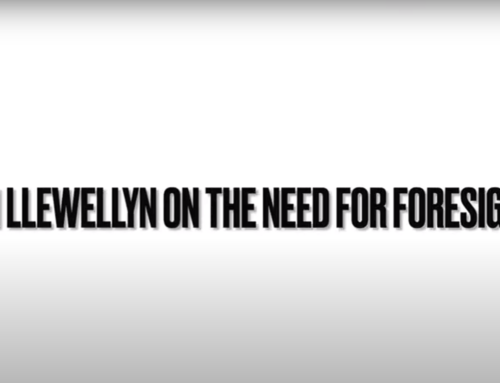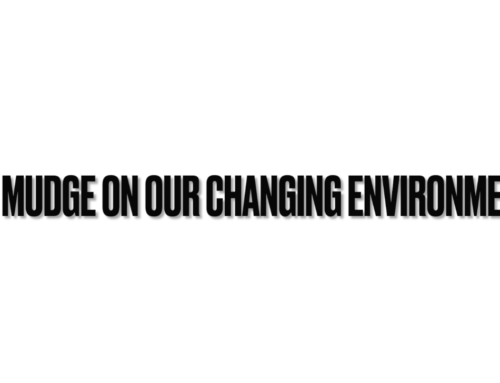NOTE: I just produced a little “thought piece” for the Association of Professional Futurists newsletter that I thought I’d share with ya’ll.
I wonder, futurist colleagues, how many more bestsellers will be written about the future with no mention of foresight or futurists? Once again, I’ve somewhat reluctantly forced myself to look at another bestseller that clients are talking about and I can no longer avoid. I anticipate a familiar experience of some noted authority of some sort discovering and reporting on the future in a highly engaging and readable fashion–and ignoring our nascent field. The latest entry is Taleb’s “The Black Swan.”
I will try—most likely in vain—to avoid sounding jealous and like I’m chewing on sour grapes, or that I’m sitting on the pity pot and whining. Or indignant. You name it. Rather, I approach this work from the perspective of trying to crack the code. How does Taleb, in this case, package the need for the very basic tenets of foresight and climb the bestseller list with it. What are we futurists missing?
This book makes an excellent case for the formation of a field devoted to foresight. If we did not exist, it would be a welcome push to get to work (and maybe it does serve that purpose anyway). It includes 29 pages of references, yet not a single professional futurist is mentioned. You’d think, maybe just by accident, but no, not a single one—at least to my knowledge.
It is a work that pokes fun at forecasting, mostly economic forecasting. Not a single mention of “scenarios.” The term does not appear in the index. No mention of Peterson’s “Out of the Blue” book on wildcards. Or Oliver Markley’s excellent new piece on wildcards that was featured in a previous Compass. Or even wildcards!
The core message of the book is that since we are so bad at forecasting, that we should simply avoid it. We are treated to several entertaining chapters on the foibles of forecasting that includes all the typical errors and biases. It’s a slightly different take than Gilbert’s “Stumbling on Happiness” but delivers essentially the same message – people are not good at thinking about the future. This, apparently, is a news flash!
Ah, starting to sound chippy. So, let’s examine some of the evidence.
• In the prologue he suggests that if 9/11 had been “reasonably conceivable” it would not have happened. As we know, it was indeed conceivable, and strangely enough, later in the book, he suggests that he foresaw the possibility himself. He reaches the same conclusion many times in the book that the failure to act on a forecast (prediction in his terms) means that we shouldn’t bother in the first place. I don’t think any of us would suggest that not acting is okay, but nor do I think we’d suggest that because we failed to act in one or even many instances, that we should simply stop trying.
• He talks about the need to focus on “anti-knowledge” or things we don’t know. Futurists call that environmental scanning and in his case emphasizing the “weak signals” of change. A methodology already exists!
• He talks about the folly of the Maginot Line. I, and I suspect many other futurists, have been using this as an example for using alternative futures for years. But he shows no awareness or says nothing on this topic of alternative futures/forecasts. Or, as mentioned earlier, the existence of scenario planning.
• He talks about an “increasingly recursive environment.” But no mention of systems thinking, certainly core to futurists’ work and long a core course in our Master’s Program at Houston.
• When he returns to 9/11 and suggests that legislators lack the courage to advocate for prevention, we might mention Hal Linstone’s “discounting the future” principle that he put for the several decades ago.
• He suggests that most analysis leaves out the outliers and study the ordinary. Again, I’m sure many of us have emphasized the need for including outlier perspectives. I know it was one of our guidelines in Thinking about the Future.
• He mentions the tendency to mistake the map for the territory. This reminds me the “island” of California map that GBN so effectively uses in its Introduction to Scenario Planning course to show how the official map can often be long at odds with reality.
And so on and so forth. Again, an elegant case for the need for foresight. It’s an interesting book. A great read. Just that minor oversight of, well, futurists. So, beyond complaining, what is this telling us? Whether the oversight was intentional or not, it suggests that there is no penalty for doing so. I don’t recall any mainstream book reviews that flogged him for ignoring foresight (though I wasn’t paying much attention). So, we are still on the margins – not exactly news.
The good news is that there is a hunger for very basic information about the future. Perhaps we need to put on our “pop” hats more often and produce more accessible pieces aimed at a general audience? If we don’t, the evidence is clear that someone else will!
Another piece of good news is that APF is in its tenth year. As part of my doctoral research, I looked into the origin of new fields and found some evidence that our evolution as a field is not all that different from others. If you will, we’re right about where we ought to be (of course, there are alternative paths to development, too). It takes a long time for a field to move from the margin into the mainstream. The formation of a professional association is one of the guideposts along the way. And there are some other positive signs as well, but I’ll leave that for another piece.
I remember that when we formed APF ten years ago, there was some debate about whether to just keep the group informal or to go down the admittedly more difficult path of building a professional association. Fortunately, we chose the latter, and we’ve significantly enlarged the community and built some positive momentum. We don’t have to start from scratch, but we need to take the next step forward, and spread the message about who we are and what we do – in a way that is more accessible in order to reach a wider audience. It will take time and patience, but I, for one, cannot think of anything I’d rather do, or for a more useful endeavor for the APF to undertake as it moves into its second decade. Andy Hines





